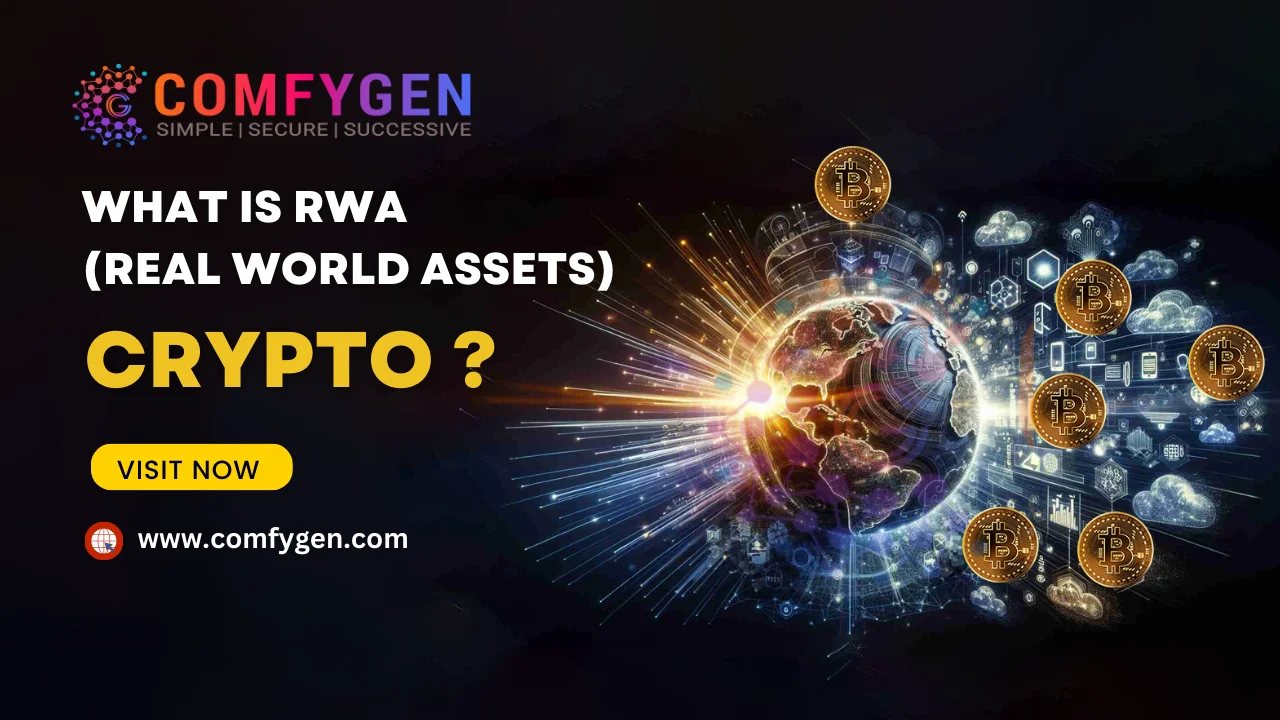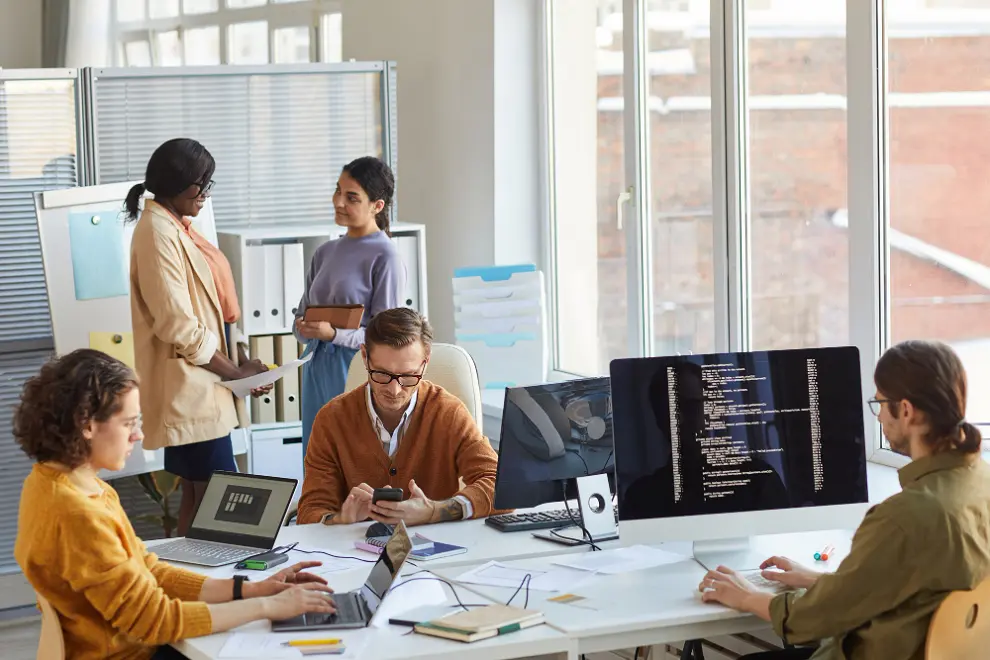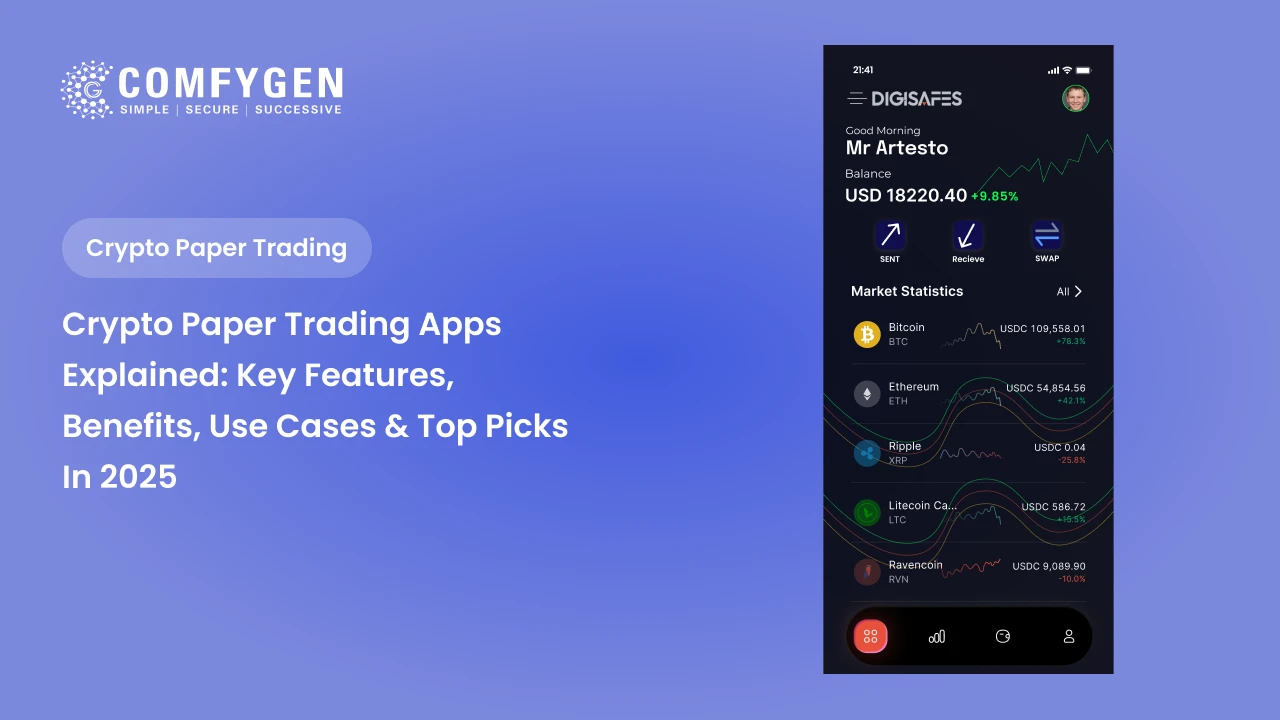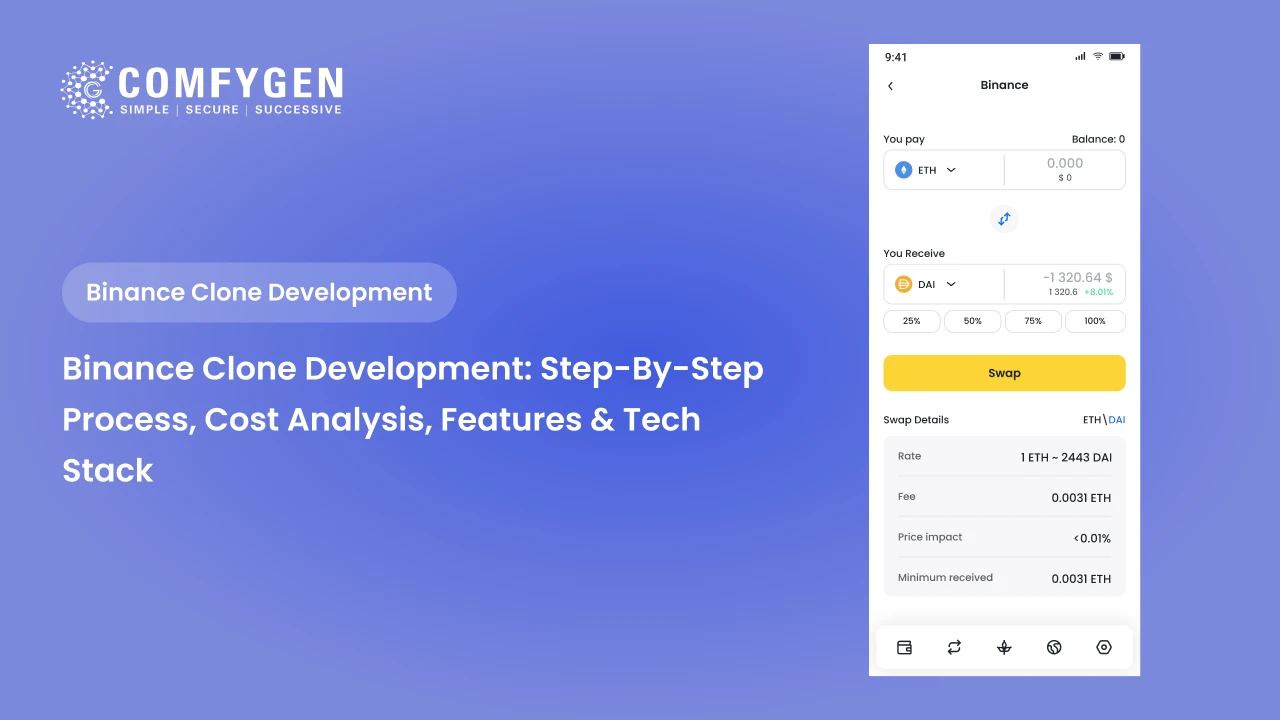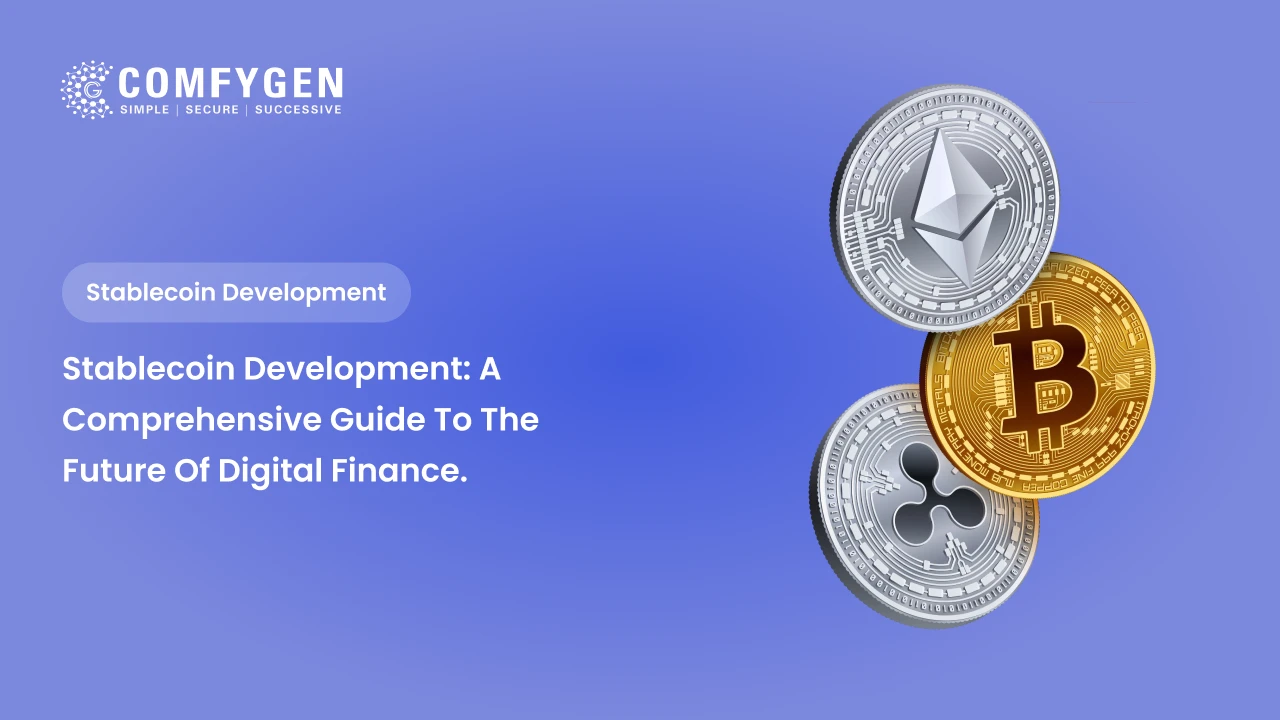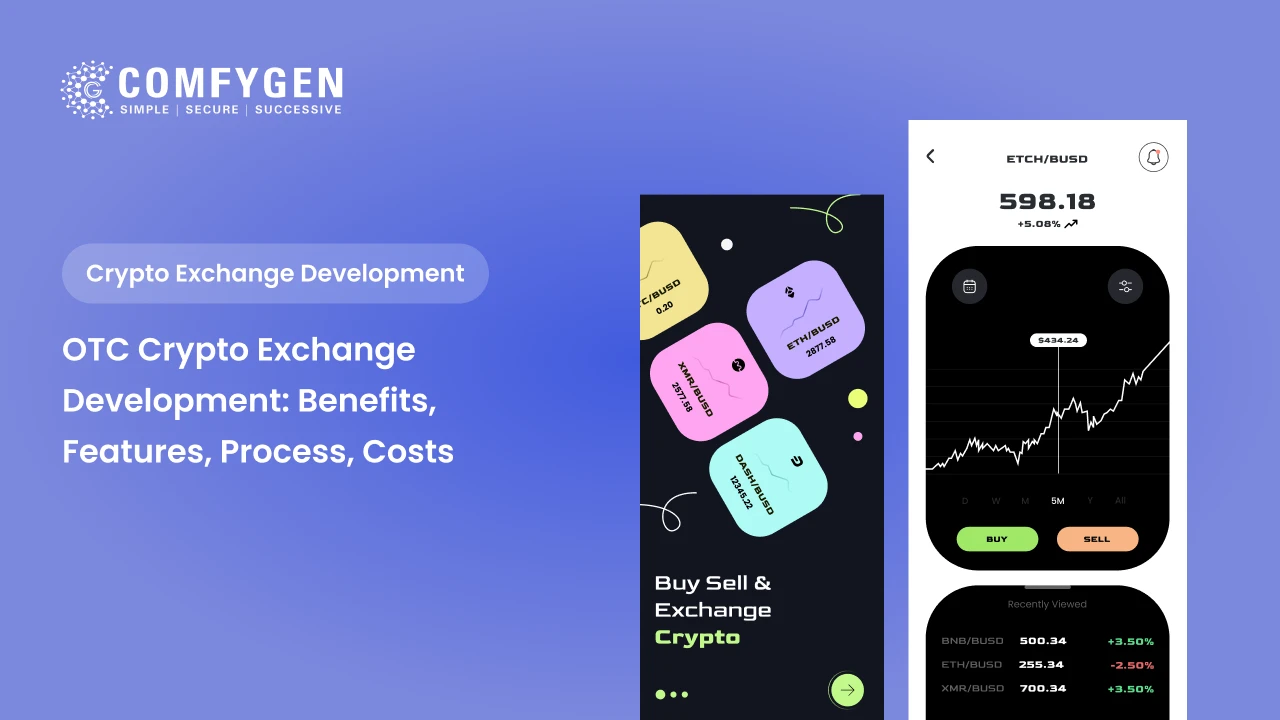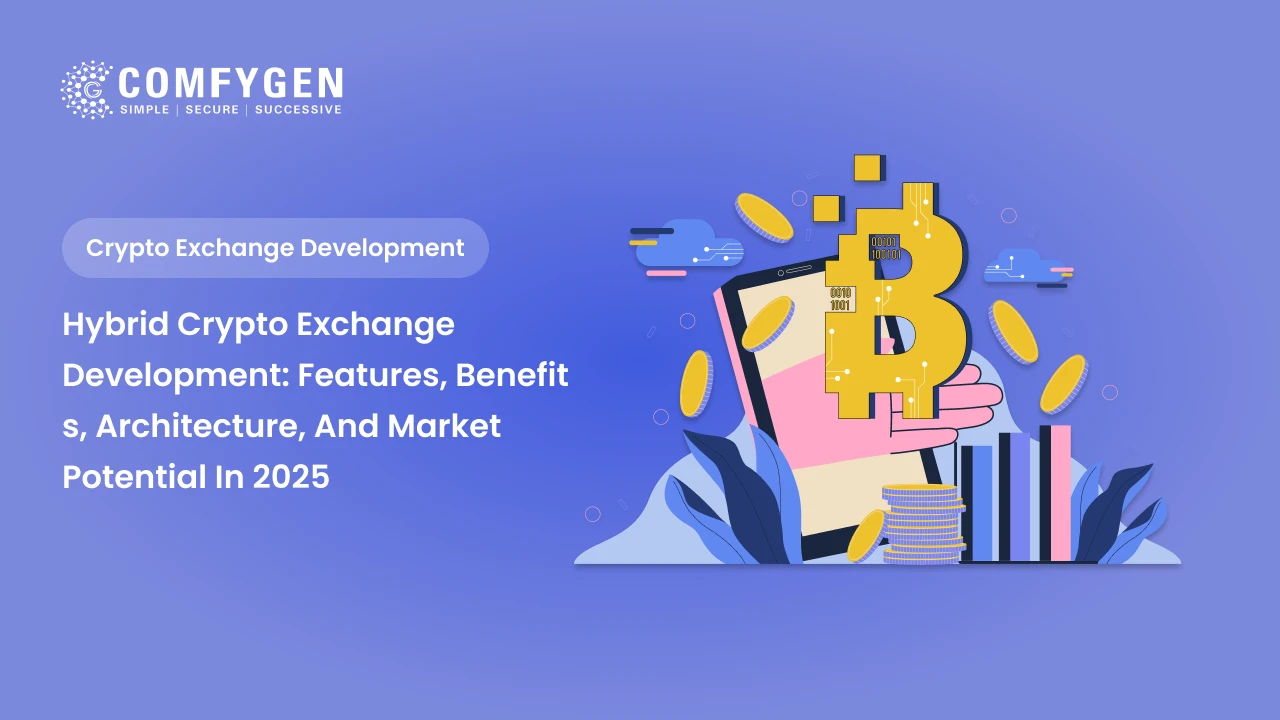What is RWA (Real World Assets) Crypto?

Distributed ledger technology, such as blockchain, is used by real-world assets (RWAs) to track performance. On the blockchain, these material or immaterial assets are tokenized into digital tokens that provide a reliable substitute for the volatile nature of cryptocurrencies. The assets represented by RWA tokens are programmable with attributes like investor criteria and lockup periods.
This group includes both tangible assets like real estate and intangible assets like government bonds. Benefits like more liquidity results are gained from this integration with the cryptocurrency world, but there are drawbacks as well, like regulatory compliance. The post examines RWAs as a potential investment tool, covering their subtleties, advantages, disadvantages, and real-world applications.
Real-World Assets Integration into Crypto
The incorporation of tangible assets into the cryptocurrency realm serves as a revolutionary link between conventional and decentralized finance. Tokenizing physical assets, like property, goods, or artwork, entails transferring their worth into digital tokens on blockchain systems. Opportunities for stepped-forward liquidity, accessibility, and efficiency in conventional markets are created by way of this convergence.
Tokenizing real-global assets entails using blockchain-based tokens that are regularly compliant with ERC-20 token or ERC-721 token standards to symbolize the ownership of these assets. Fractional possession is made possible via the tokens’ corresponding small quantities of the underlying asset. This opens up formerly closed markets to a wider spectrum of traders, democratizing entry to investments.
Benefits consist of decreased transaction costs, spherical-the-clock market accessibility, and more advantageous transparency because of the blockchain’s auditable and immutable facts. By further automating procedures like asset management and dividend distribution, smart contracts improve efficiency and lessen the need for middlemen.
However, issues with felony frameworks, regulatory compliance, and building confidence in decentralized systems live on. For real-global asset integration into the cryptocurrency environment to be extensively followed and reach its complete potential, it will likely be imperative to strike a balance between innovation and regulatory compliance. Collaboration among blockchain innovators and conventional economic establishments is predicted to be important in figuring out the destiny of asset tokenization as this blockchain develops.
Also Read: Why and How to Invest in Real World Assets (RWA)?
Benefits of Real-World Assets Integration into the Crypto
Real-global properties are bringing approximately a brand new wave of financial innovation inside the cryptocurrency space, with many advantages that cross beyond conventional funding paradigms. On blockchain structures, real-global assets, tangible and intangible, are tokenized and represented as virtual property, which has several benefits for the decentralized finance (DeFi) area.
A Rise in Liquidity
Increased liquidity in traditionally illiquid markets is one of the essential blessings of incorporating actual real world assets crypto. By taking into consideration fractional possession, tokenizing belongings like nice artwork, actual estate, or commodities makes participation viable for a larger pool of investors. By disposing of boundaries, fractionalization improves market liquidity with the aid of facilitating the purchase and sale of smaller quantities of high-value belongings.
Constant Access to the Market
When real-world assets are incorporated into cryptocurrency, it becomes possible to access the market around the clock, in comparison to standard financial markets, which have set hours. Blockchain removes the want for middlemen in go-border and go-time region transactions. Global investors now have extra flexibility in this constant market operation, which makes buying and selling property feasible each time they need it and gives previously unheard-of market accessibility.
Inclusivity and Accessibility
RWAs democratize entry to investment possibilities inside the cryptocurrency area. Individuals can make investments with fewer capital necessities in a wide variety of real-global properties by tokenizing them. For retail traders who won’t have had to get entry to high-fee property like an actual estate or fine art in traditional financial markets, this inclusivity is in particular critical.
Immutability and Transparency
The foundation of tokenization, cryptocurrency, and blockchain generation ensures the immutability and transparency of transaction data. The blockchain data for each transaction concerning tokenized actual-global assets generates an auditable and impenetrable history of ownership and transfers. Investors are given a clear and verifiable trail of asset ownership, which fosters investor agreement.
Cost Efficiency
Real-world asset tokenization on blockchain development platforms lowers transaction fees and gets rid of a number of middlemen who might be generally concerned with asset transfers. Self-executing code at the blockchain, known as “clever contracts,” automates some of the responsibilities, which include compliance tests and dividend distribution, putting off the want for middlemen and, as a result, reducing the rate of these offerings.
Portfolio Diversification
By distributing danger among several asset lessons, tokenized real-international property assists traders in diversifying their holdings. The range of investment opportunities within the cryptocurrency area is improved with the aid of the potential to put money into quite a few properties, consisting of authorities bonds and actual estate, making portfolios extra resilient and much less at risk of marketplace fluctuations.
Programmable Features
In the cryptocurrency space, RWAs provide programmable features via smart contract development. These programmable features can be things like asset management automation, defining requirements for accredited investors, or lockup periods. This programmability guarantees regulatory compliance and improves asset management efficiency.
Fractional Ownership
A wider variety of traders can now participate in the ownership of treasured property, including art collections, top actual property, and different assets through tokenization, which lets in fractional possession of excessive-value belongings. A more equitable distribution of investment possibilities is made possible by using this democratization of possession that is consistent with the decentralized spirit of cryptocurrency.
Potential for Innovation
Financial innovation has a lot of room to grow as a result of the RWAs’ integration into the cryptocurrency space. The potential for developing innovative financial instruments and investment vehicles grows as developers experiment with blockchain development and investigate new use cases. This invention has the power to transform established financial markets and open up fresh possibilities for asset issuers and investors alike.
Regulatory Compliance
Although managing regulatory environments can be difficult, tokenizing physical assets in cryptocurrency provides a way to improve compliance. RWAs can simplify compliance with regulatory requirements, lower the risk of legal issues, and ensure a more seamless integration into the current financial ecosystem by integrating compliance rules into smart contracts.
Consult our blockchain experts to transform your real assets into Crypto
Challenges and Risks Related to the Real-World Asset
Although there are many capability advantages, there are also dangers and challenges related to integrating actual-world belongings into the cryptocurrency area that have to be cautiously considered.
Legal and Contractual Risks
There may be legal issues with smart contract enforceability and tokenized asset recognition under current legal frameworks. Even though smart contracts are meant to be automated and self-executing, disagreements or unanticipated occasions should provide an upward push to legal ambiguities. To reduce felony risks, it’s crucial to create specific contracts and felony frameworks that acknowledge the legitimacy of blockchain-based total transactions.
Regulatory Uncertainty
The continuously converting and frequently ambiguous regulatory surroundings are one of the largest obstacles to the tokenization of actual global property. The varying perspectives of different jurisdictions regarding cryptocurrencies and the blockchain era pose a mission to the established order of uniform compliance frameworks. To ensure a secure and compliant environment, the crypto enterprise, criminal professionals, and regulatory bodies should work collectively to navigate those regulatory complexities.
Security Concerns
One of the primary troubles is the safety of virtual assets, which incorporate tokenized actual global assets. Vulnerabilities can arise in smart contracts, the self-executing code that powers blockchain transactions. Insufficient safety protocols can go away assets prone to manipulation, fraud, or hacking. Strong cybersecurity procedures and ongoing smart contract development are essential for reducing these risks and preserving investor trust.
Tokenization Infrastructure
Tokenization infrastructure has to be evolved and kept updated for you to successfully integrate bodily belongings into the cryptocurrency area. Sophisticated technological solutions are hard to ensure easy token issuance, transferability, and regulatory compliance. Scalability issues, interoperability issues across various blockchain networks, and integration issues with identity verification procedures from the real world can all present challenges.
Market Liquidity and Valuation
Tokenization improves liquidity, but a few actual-world belongings won’t have a sufficiently deep market, leaving them prone to volatility and rate manipulation. Illiquid belongings, like one-of-a-type artwork or precise real estate holdings, may be difficult and subjective to price. To preserve market integrity and investor self-belief, transparent pricing discovery methods and valuation methodologies should be established.
What are the Future Trends of RWA in Crypto?
The future of real-world assets inside the cryptocurrency space is expected to have a significant effect on how conventional finance and decentralized finance (DeFi) intersect. In the upcoming years, some significant traits are anticipated to emerge that will propel the continued adoption and integration of RWAs in the cryptocurrency environment.
Increased Regulatory Clarity and Frameworks
As the cryptocurrency exchange develops, more comprehensive frameworks for tokenized real-world assets are expected to be established, along with greater regulatory clarity. Global regulatory organizations are having discussions about offering a controlled setting for the issue, exchange, and administration of RWAs. Unambiguous regulations have the potential to boost investor confidence and promote increased involvement from institutional players.
Interoperability and Standardisation
The smooth integration of RWAs depends on the interoperability of various blockchain networks as well as the standardization of tokenization protocols. Initiatives to create uniform standards for tokenized assets, like cross-chain compatibility and interoperable smart contracts, will likely pick up steam. Interoperability between different blockchain development platforms will improve liquidity and facilitate more effective trading.
Expansion of Asset Classes
It is anticipated that more asset classes will become tokenized. Although other asset classes like intellectual property, music royalties, and even income streams from conventional businesses may become more and more represented as digital tokens, real estate and art have been early candidates for tokenization. Investors will have more options for portfolio diversification thanks to this expansion.
Evolving Technology Solutions
Technological tendencies, especially the ones related to blockchain and clever agreement capability, will maintain spurring innovation in the tokenization of bodily property. More consumer-friendly systems, improved safety functions, and increased scalability will all assist in making the system simpler and more available for issuers as well as traders. Additionally, new channels for lending, borrowing, and trading tokenized RWAs may be opened up by decentralized finance (DeFi) development.
Institutional Involvement
It is anticipated that institutional investors will become more involved. The integration of tokenized real-world assets into portfolios is expected to be pursued by institutional players such as asset management firms, pension funds, and family offices as the infrastructure supporting RWAs matures and regulatory frameworks become clearer. This infusion of institutional funds may help to stabilize and legitimize the market even more.
Dive into RWA Crypto Investments Now!
Conclusion
The future of Real-World Assets in the cryptocurrency space is dynamic and ever-converting. Factors like the expansion of asset lessons, regulatory framework integration, interoperability, improved institutional involvement, technological advancements, and ease of pass-border transactions all point to a promising future for the tokenization of actual global assets in order to make contributions to the monetary enterprise’s ongoing transformation.
How does the RWAs tokenization work?
Tokenization is the process of turning bodily assets' prices into digital tokens on a blockchain. Smart contracts or self-executing code on the blockchain are generally used in this process to automate the issuing, moving, and coping of these tokens. Fractional possession is made viable with the aid of the tokens' illustration of a part of the underlying asset. Blockchain gives a tamper-resistant record of ownership and transfers, making sure transaction security, immutability, and transparency.
What challenges and risks come with making investments in RWAs?
Regulatory uncertainty, possible security risks associated with smart contracts, market liquidity, valuation difficulties for some illiquid assets, infrastructure-related problems, legal and contractual risks, and the requirement to handle operational difficulties like custody and settlement are all factors to be considered when investing in RWAs. The success and acceptance of RWAs in the larger investment landscape are also significantly influenced by market adoption and perception.
What are the advantages RWAs in crypto offer?
RWAs have several benefits for the cryptocurrency enterprise, including more desirable liquidity because of fractional possession, spherical-the-clock market accessibility, value-effectiveness from fewer middlemen and transaction expenses, audibility of blockchain generation, and programmable capabilities via clever agreement technology. Furthermore, RWAs facilitate portfolio diversification, opening doors for investors to engage in markets that might be typically off-limits, like excellent artwork or actual estate.
How can the tokenization of RWAs be advanced by blockchain technology?
Innovation within the tokenization of real-international assets can be fueled via improvements in blockchain generation, consisting of greater protection functions, scalability, and interoperability if you want to make investing easier and extra on hand.
How can investors in tokenized RWAs guarantee the safety of their financial investments?
Performing vast due diligence on the underlying asset and the platform issuing the tokens will assist investors in increasing the security of their investments in tokenized RWAs. It's crucial to observe pleasant practices for defensive private keys, use reliable and stable wallets, and keep up with adjustments and protection enhancements in the blockchain community. Investors' tokenized real-world assets are further protected by selecting platforms and projects with strong cybersecurity and compliance protocols.
How does the RWAs tokenization work?
Tokenization is the process of turning bodily assets' prices into digital tokens on a blockchain. Smart contracts or self-executing code on the blockchain are generally used in this process to automate the issuing, moving, and coping of these tokens. Fractional possession is made viable with the aid of the tokens' illustration of a part of the underlying asset. Blockchain gives a tamper-resistant record of ownership and transfers, making sure transaction security, immutability, and transparency.
What challenges and risks come with making investments in RWAs?
Regulatory uncertainty, possible security risks associated with smart contracts, market liquidity, valuation difficulties for some illiquid assets, infrastructure-related problems, legal and contractual risks, and the requirement to handle operational difficulties like custody and settlement are all factors to be considered when investing in RWAs. The success and acceptance of RWAs in the larger investment landscape are also significantly influenced by market adoption and perception.
What are the advantages RWAs in crypto offer?
RWAs have several benefits for the cryptocurrency enterprise, including more desirable liquidity because of fractional possession, spherical-the-clock market accessibility, value-effectiveness from fewer middlemen and transaction expenses, audibility of blockchain generation, and programmable capabilities via clever agreement technology. Furthermore, RWAs facilitate portfolio diversification, opening doors for investors to engage in markets that might be typically off-limits, like excellent artwork or actual estate.
How can the tokenization of RWAs be advanced by blockchain technology?
Innovation within the tokenization of real-international assets can be fueled via improvements in blockchain generation, consisting of greater protection functions, scalability, and interoperability if you want to make investing easier and extra on hand.
How can investors in tokenized RWAs guarantee the safety of their financial investments?
Performing vast due diligence on the underlying asset and the platform issuing the tokens will assist investors in increasing the security of their investments in tokenized RWAs. It's crucial to observe pleasant practices for defensive private keys, use reliable and stable wallets, and keep up with adjustments and protection enhancements in the blockchain community. Investors' tokenized real-world assets are further protected by selecting platforms and projects with strong cybersecurity and compliance protocols.

Mr. Saddam Husen, (CTO)
Mr. Saddam Husen, CTO at Comfygen, is a renowned Blockchain expert and IT consultant with extensive experience in blockchain development, crypto wallets, DeFi, ICOs, and smart contracts. Passionate about digital transformation, he helps businesses harness blockchain technology’s potential, driving innovation and enhancing IT infrastructure for global success.
Based on Interest
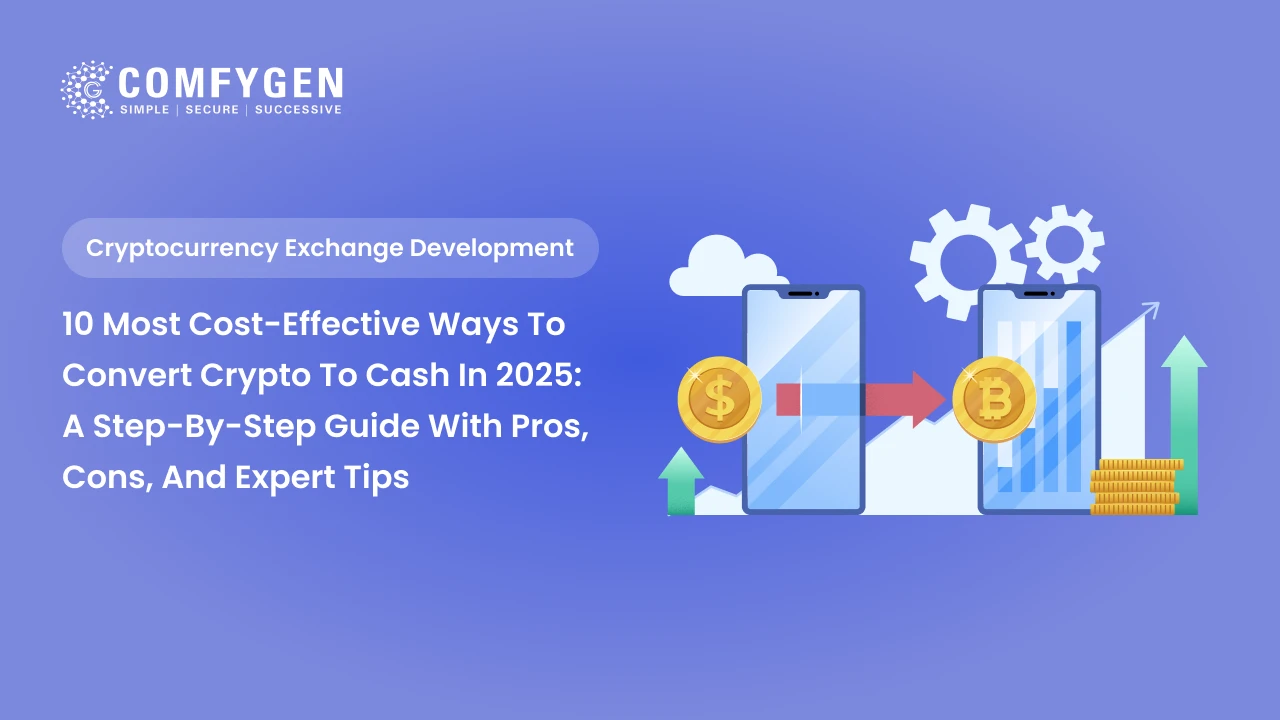
10 Most Cost-Effective Ways to Convert Crypto to Cash in 2025: A Step-by-Step Guide
Introduction Cryptocurrency continues to dominate financial markets globally. As of 2025, millions of investors, traders, and businesses are holding a portion of…

10 Most Cost-Effective Ways to Convert Crypto to Cash in 2025: A Step-by-Step Guide
Introduction Cryptocurrency continues to dominate financial markets globally. As of 2025, millions of investors, traders, and businesses are holding a portion of…

